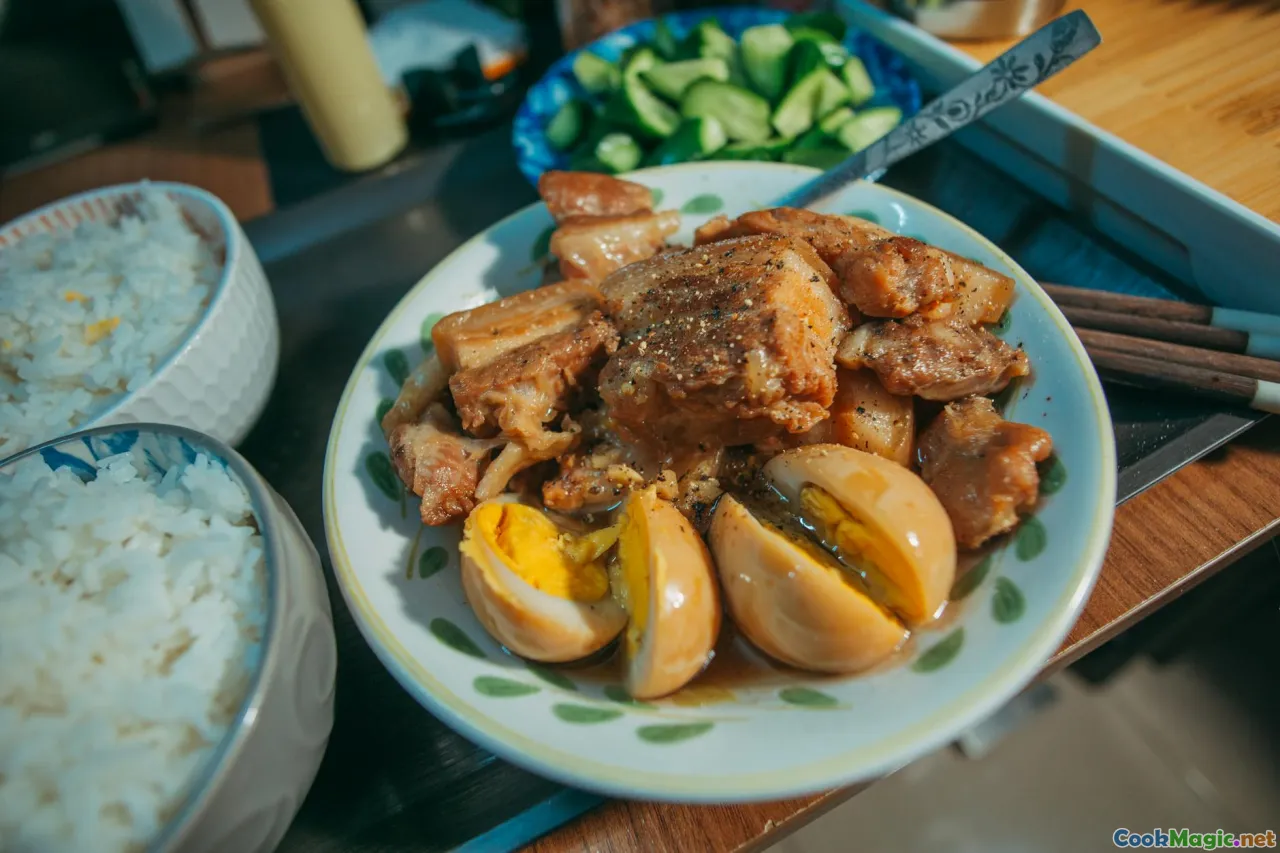Traditional Methods for Making Pancit Canton
8 min read Discover the rich cultural heritage and authentic techniques behind making Pancit Canton, a beloved Filipino noodle dish, through time-honored methods. May 09, 2025 15:00
Traditional Methods for Making Pancit Canton
Introduction: A Culinary Heritage in Every Bite
Imagine the aroma of sizzling soy, garlic, and savory meats filling the air, beckoning family and friends to gather around a steaming plate of Pancit Canton. This iconic Filipino noodle dish isn’t just food; it’s a celebration of history, community, and tradition that has been passed down through generations.
Many Filipinos hold a special place in their hearts for Pancit Canton. It’s a dish that embodies the spirit of Filipino hospitality—vibrant, hearty, and comforting. But beyond its delicious taste lies a fascinating story of traditional preparation methods that have stood the test of time. In this article, we’ll explore the authentic techniques that make Pancit Canton a treasured part of Filipino culinary culture.
The Cultural Significance of Pancit Canton
Pancit Canton is more than just a noodle dish; it’s woven into the fabric of Filipino celebrations and everyday life. Whether it’s a birthday, New Year’s, or a family gathering, serving Pancit Canton symbolizes long life and prosperity. Its origins trace back to Chinese influence, which melded seamlessly with indigenous Filipino ingredients and flavors, creating a unique culinary identity.
In Filipino tradition, the preparation of Pancit Canton often involves communal effort—families gather in the kitchen, each member contributing to the meticulous process. This shared activity reinforces bonds and fosters a sense of cultural continuity.
Historical Roots and Evolution
The roots of Pancit Canton can be traced to Chinese immigrants who arrived in the Philippines centuries ago. They brought with them their noodle-making techniques and stir-fry methods, which Filipino cooks adapted using local ingredients like soy sauce, calamansi, and native vegetables.
Over time, Pancit Canton evolved from a simple stir-fried noodle dish to a complex, flavorful creation that reflects regional tastes and available ingredients. Today, it’s a versatile dish that can feature everything from pork and chicken to seafood and vegetables, depending on local preferences.
The Heart of Authentic Preparation: Traditional Techniques
1. Choosing the Right Noodles
The foundation of Pancit Canton lies in its noodles. Traditionally, dried Canton noodles made from wheat flour are used. These noodles are thick, slightly chewy, and able to absorb flavors beautifully. For an authentic experience, sourcing quality dried noodles is crucial—they should be fresh, with a firm texture and a slight yellow hue.
2. Preparing the Sauce Base
A key to authentic Pancit Canton is the sauce. Traditionally, a mixture of soy sauce (preferably of good quality for depth), oyster sauce, and sometimes a dash of fish sauce forms the flavor base. The sauce is prepared separately, allowing the cook to control the seasoning and consistency.
3. Stir-Frying Technique
The hallmark of traditional Pancit Canton preparation is the stir-fry process. It involves a high-heat, quick-cooking method that preserves the texture of the ingredients while creating a beautiful, slightly caramelized flavor.
- Garlic and Onion: Finely chopped garlic and onion are sautéed in a wok or large pan with a generous amount of cooking oil until fragrant.
- Meat and Seafood: Thinly sliced pork, chicken, or shrimp are added and cooked until just done, maintaining tenderness.
- Vegetables: Vegetables like carrots, cabbage, and snow peas are added last, cooked briefly to retain their crunch and vibrant color.
- Noodles: The pre-cooked noodles are tossed into the wok, absorbing the flavors and melding with the ingredients.
- Sauce: The sauce mixture is poured over the noodles and stir-fried vigorously to coat everything evenly.
4. The Art of Cooking with Heat
Traditional Filipino cooks emphasize the importance of high heat and continuous tossing during stir-frying. This technique ensures that the noodles don’t become soggy and that the flavors develop a slightly smoky aroma known locally as "wok hei," a hallmark of well-made stir-fried dishes.
5. Serving and Garnishing
Once cooked, Pancit Canton is typically served hot, garnished with sliced boiled eggs, chopped scallions, and sometimes calamansi for a citrusy finish. The visual appeal of the dish—vivid orange from carrots, green from cabbage and scallions, and golden noodles—adds to its allure.
Personal Insights and Cultural Anecdotes
Having grown up in a Filipino household, I’ve seen firsthand how the preparation of Pancit Canton is a cherished family ritual. My grandmother, a master of traditional cooking, would spend hours meticulously preparing each ingredient—the thinly sliced pork, the perfectly julienned vegetables, and the homemade stir-fry sauce—before firing up her trusty wok.
The aroma that filled her kitchen during these moments was intoxicating, blending garlic, soy, and the smoky scent of hot oil. Watching her stir and toss with practiced ease, I learned that making Pancit Canton is an act of love—an expression of Filipino resilience and community.
Modern Takes and Preserving Tradition
While modern kitchens may introduce shortcuts and new ingredients, the essence of traditional methods remains vital. Chefs and home cooks alike continue to honor these techniques, recognizing that authentic flavor and texture are rooted in patience and respect for the process.
Some enthusiasts experiment with gluten-free noodles or incorporate regional ingredients, but the core principles—high heat, quick stir-fry, fresh ingredients—are unchanged. This balance between tradition and innovation keeps Pancit Canton a vibrant part of Filipino cuisine.
Conclusion: A Dish That Connects Generations
In the end, making Pancit Canton the traditional way is about more than just following a recipe; it’s about preserving a cultural legacy. Each stir, toss, and ingredient reflects generations of Filipino resilience, community, and culinary ingenuity.
So next time you prepare this beloved dish, remember the history and care embedded in every step. Embrace the high heat, the vibrant ingredients, and the love that makes Pancit Canton not just a meal but a celebration of Filipino identity.
Enjoy your culinary journey into the heart of Filipino tradition—happy cooking!









